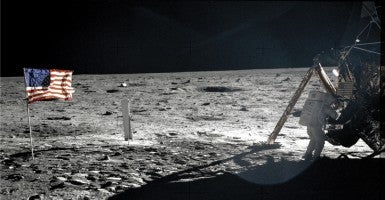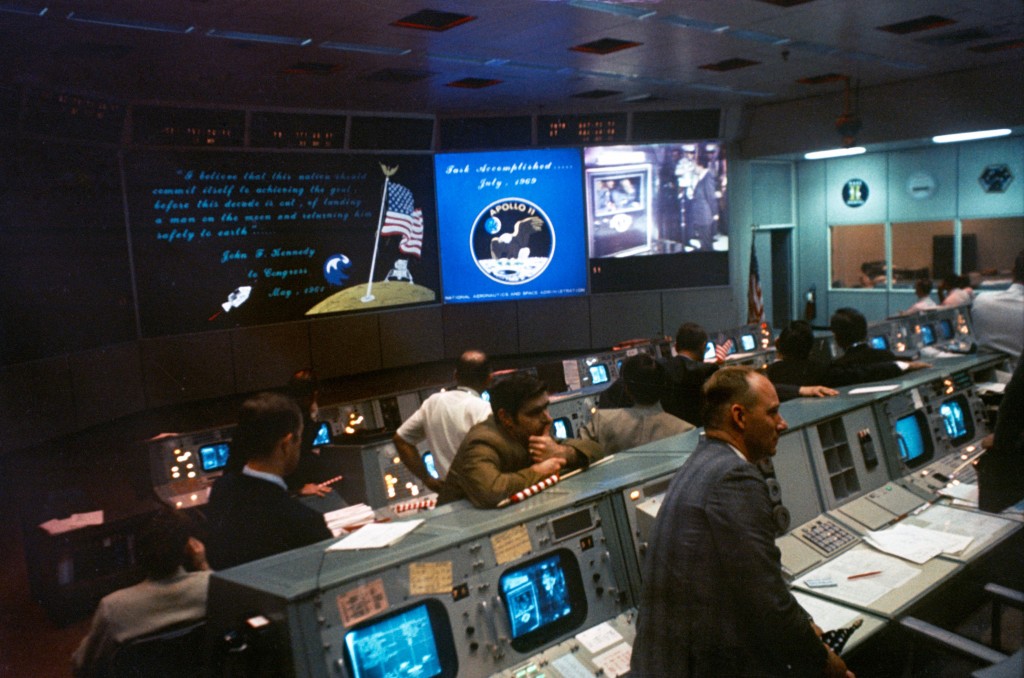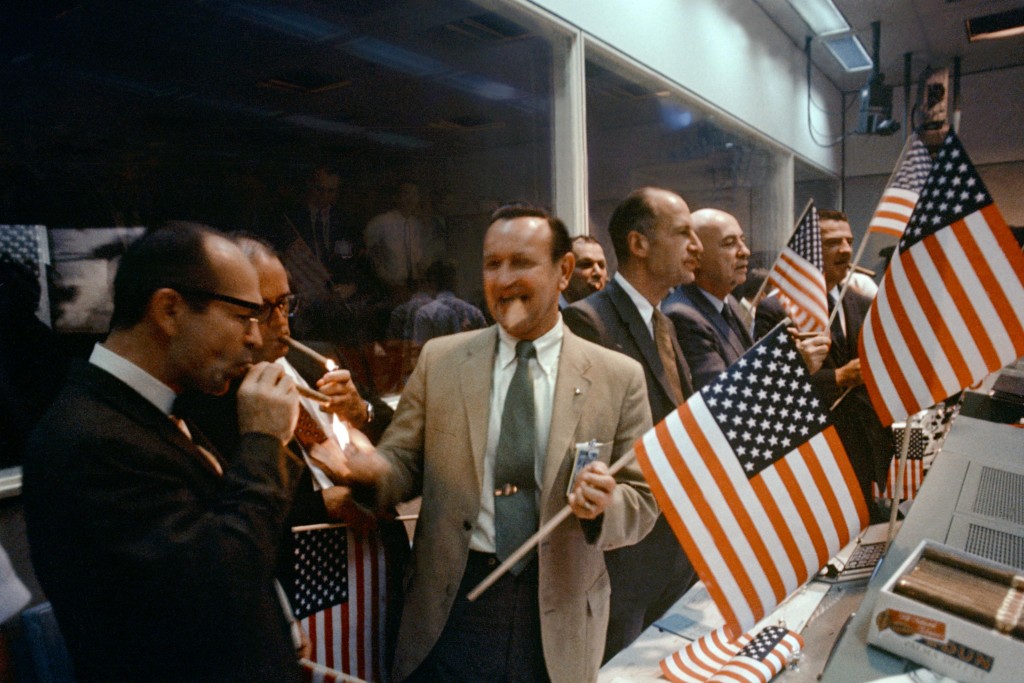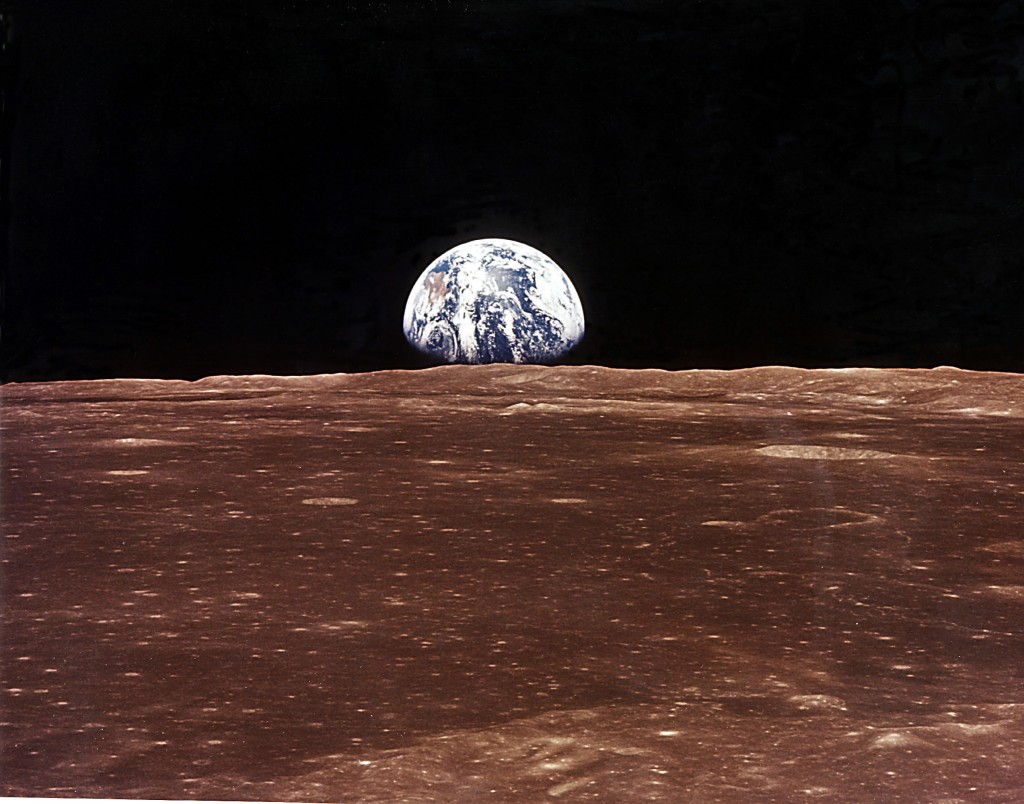President Eisenhower signed the National Aeronautics and Space Act exactly 57 years ago today, in 1958.
This legislation created the National Aeronautics and Space Administration (NASA) with the mission of establishing an American presence on the final frontier. “[A]ctivities in space should be devoted to peaceful purposes for the benefit of all mankind,” the act states.
To commemorate this day, here is a look back at the early days of NASA, up until the first man walked on the moon only 11 years after its creation.
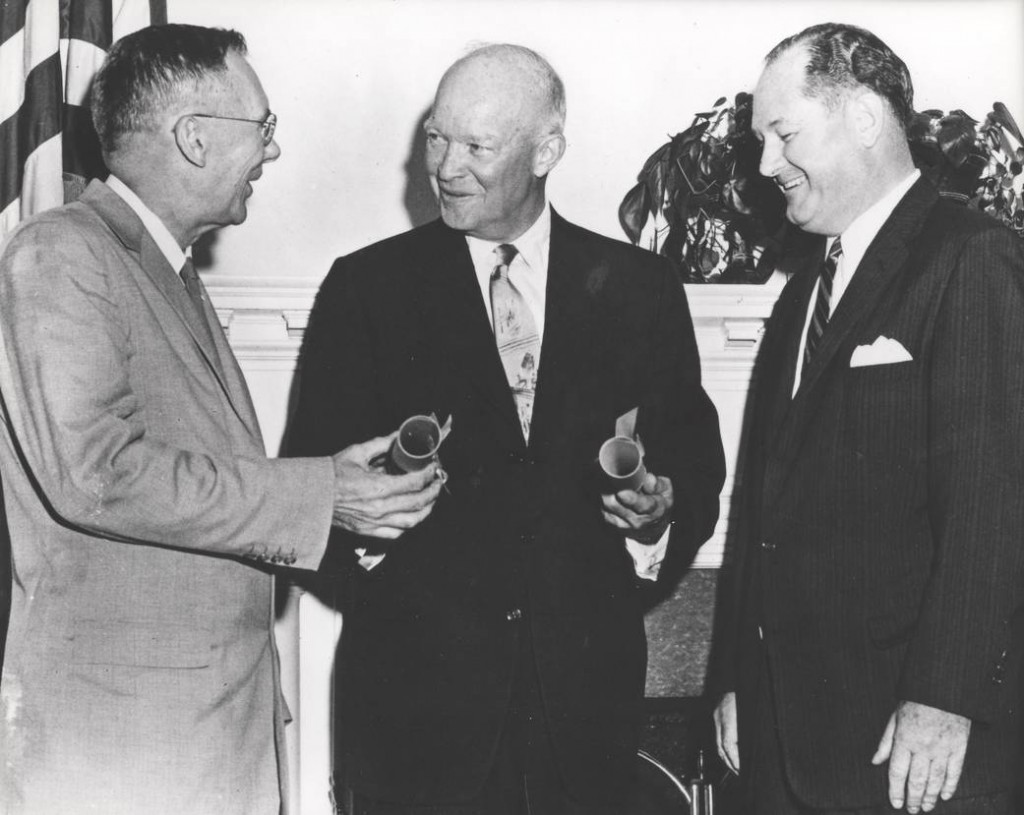
President Eisenhower commissioned Dr. T. Keith Glennan, as the first administrator for NASA and Dr. Hugh L. Dryden as deputy administrator. NASA officially began operations on Oct. 1, 1958, to perform civilian research related to space flight and aeronautics. (Photo: NASA)
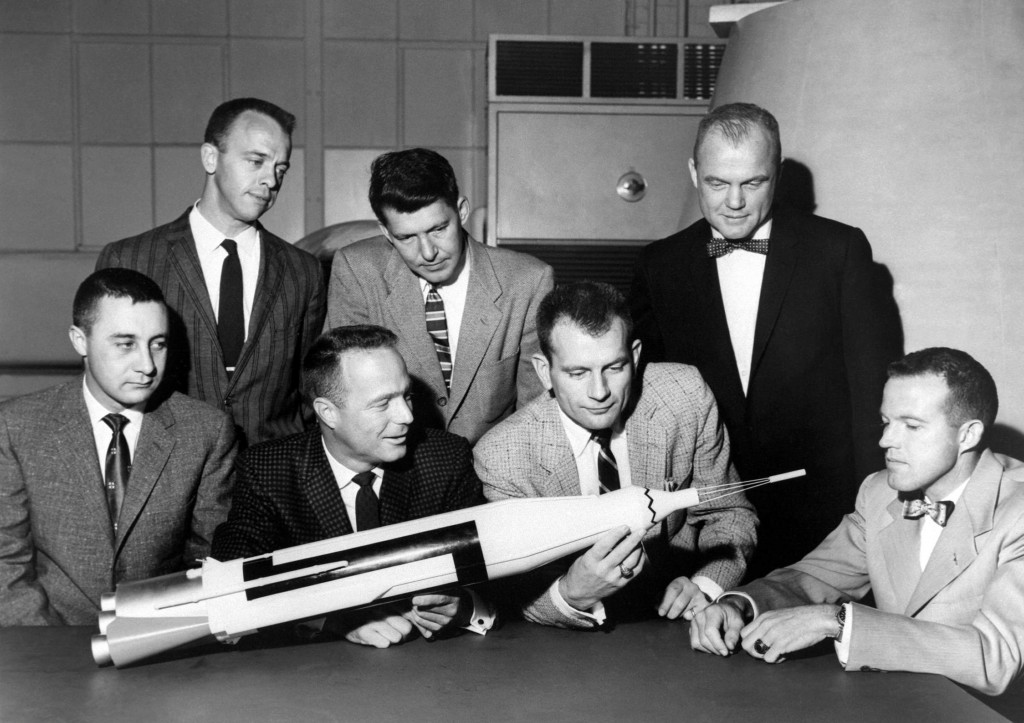
The Original 7 Mercury Astronauts are pictured around a table admiring an Atlas model. The Mercury 7 astronauts were introduced to the American public in April 1959. (Photo: NASA via CNP/Newscom)
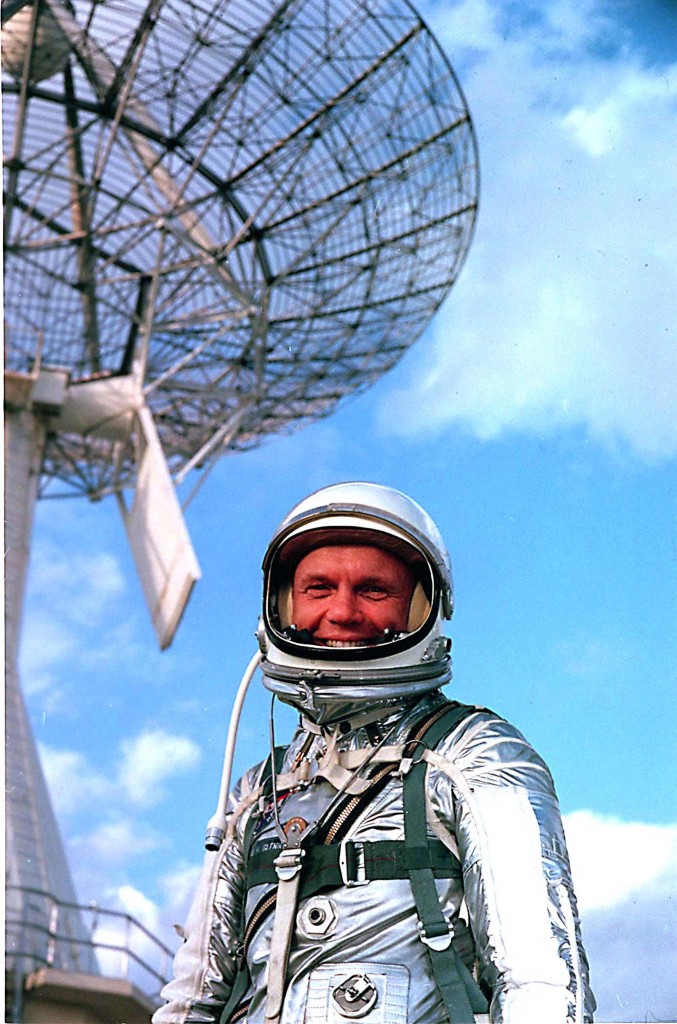
Astronaut John H. Glenn Jr., is attired in a training version of a Mercury space suit, during a break from training for the Friendship 7 spacecraft. (Photo: NASA via CNP/Newscom)

United States President John F. Kennedy inspects interior of the Friendship 7 on Feb. 23, 1962 as he presented the NASA Distinguished Service Medal to Astronaut Glenn. (Photo: Cecil Stoughton/White House via CNP/Newscom)
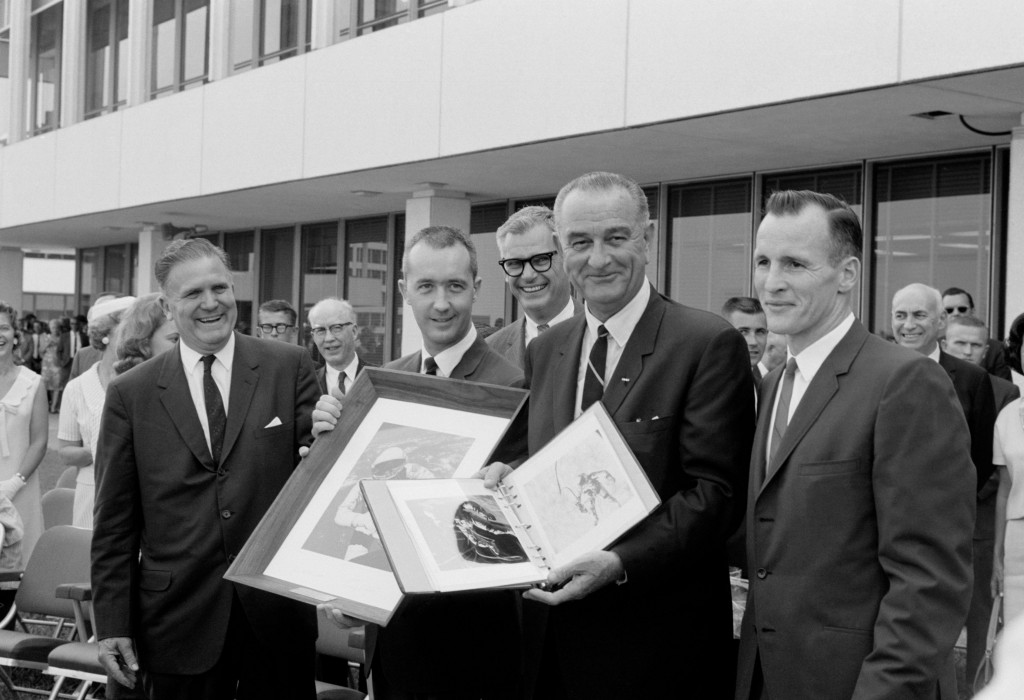
President Johnson holds a Gemini-4 souvenir photo album which he was presented by Gemini-4 astronauts James A. McDivitt and Edward H. White II. McDivitt holds a framed picture of White’s “spacewalk” which was also given to the president. (Photo: NASA)
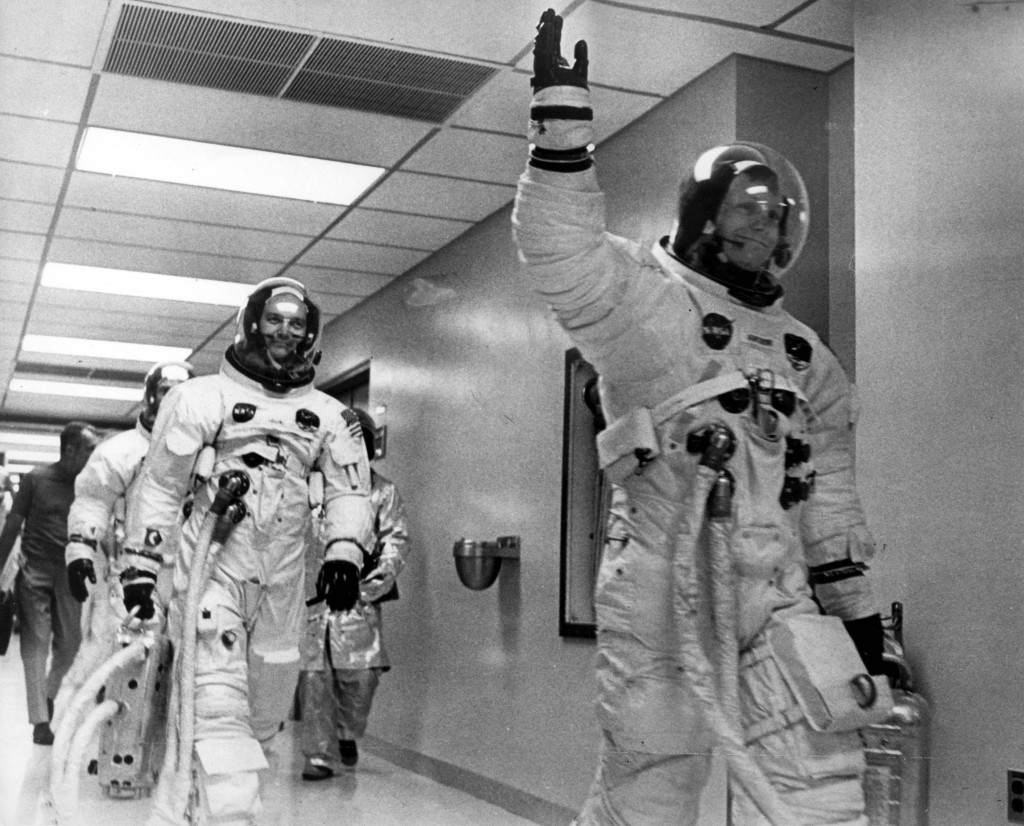
The crew members of Apollo 11 seen as they leave the Space Center ready to head to the moon. (Photo: Keystone Pictures USA/ZumaPress/Newscom)
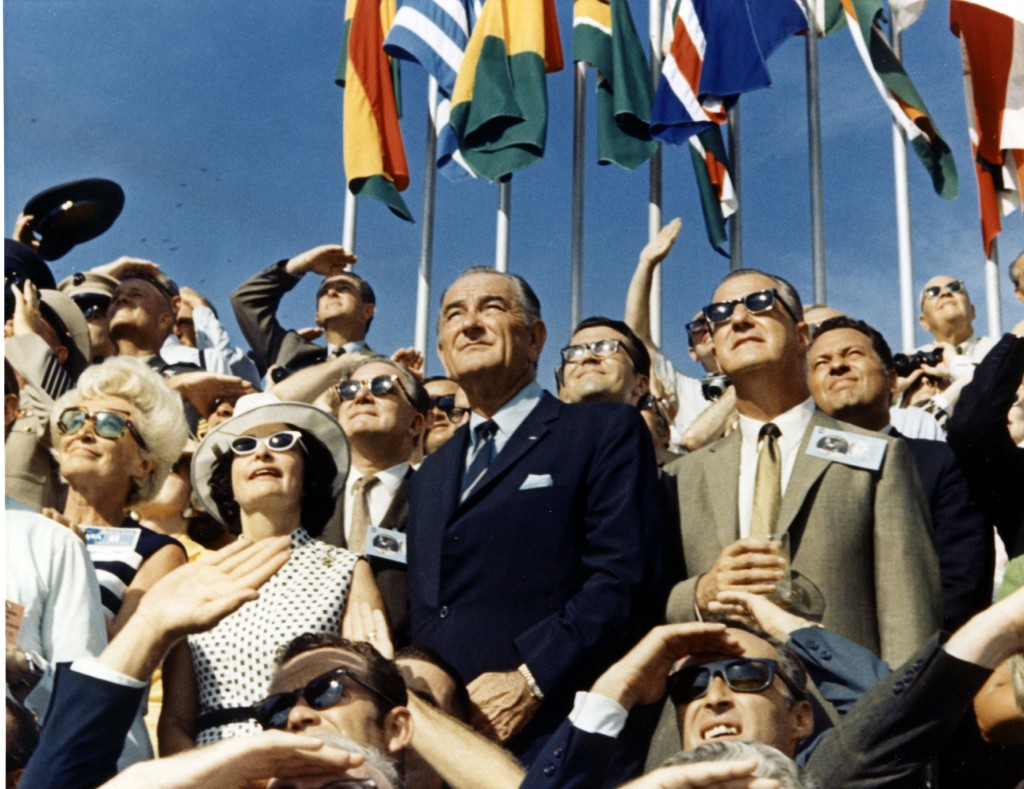
Former President Johnson and Vice President Spiro Agnew watch the liftoff of Apollo 11 from the Kennedy Space Center, July 16, 1969. (Photo: NASA/KSC)
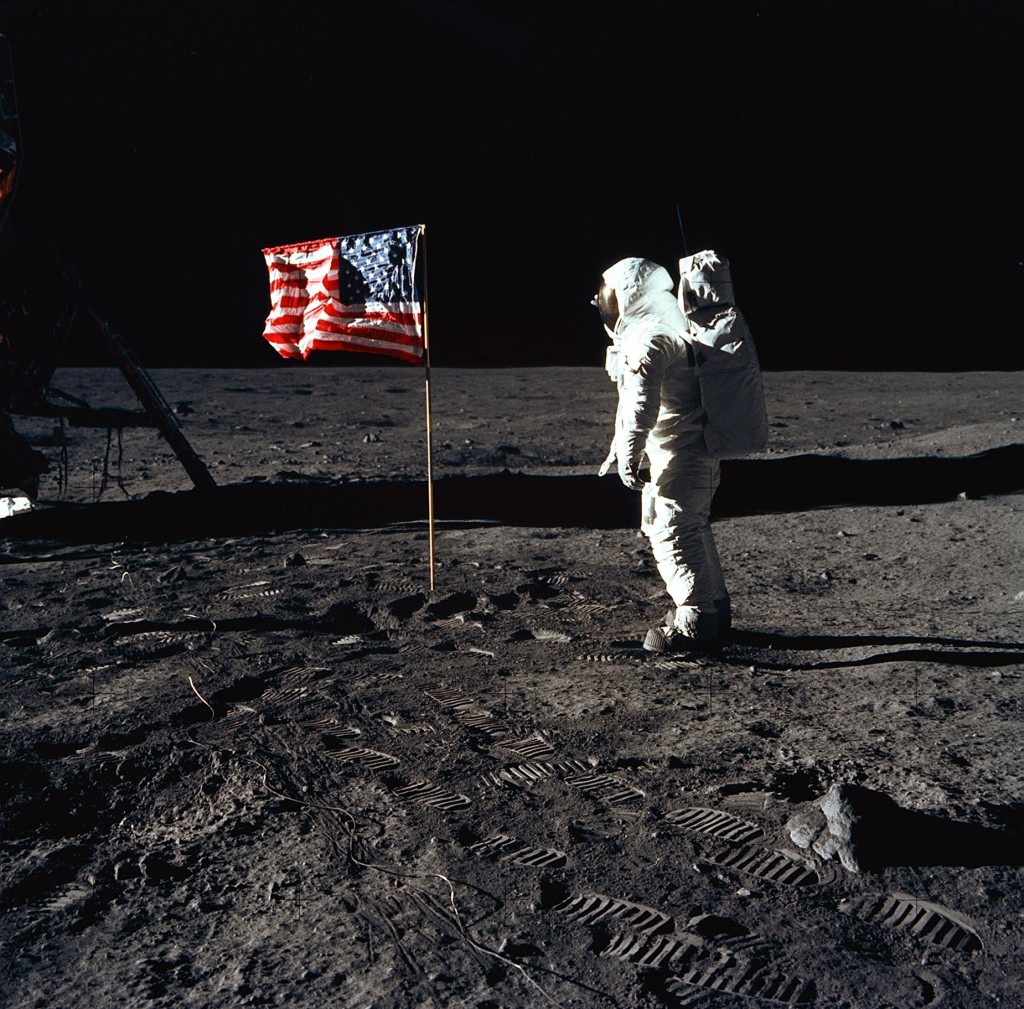
Astronaut Edwin E. Aldrin Jr. poses for a photograph beside the United States flag during an Apollo 11 mission July 20, 1969. (Photo: NASA)
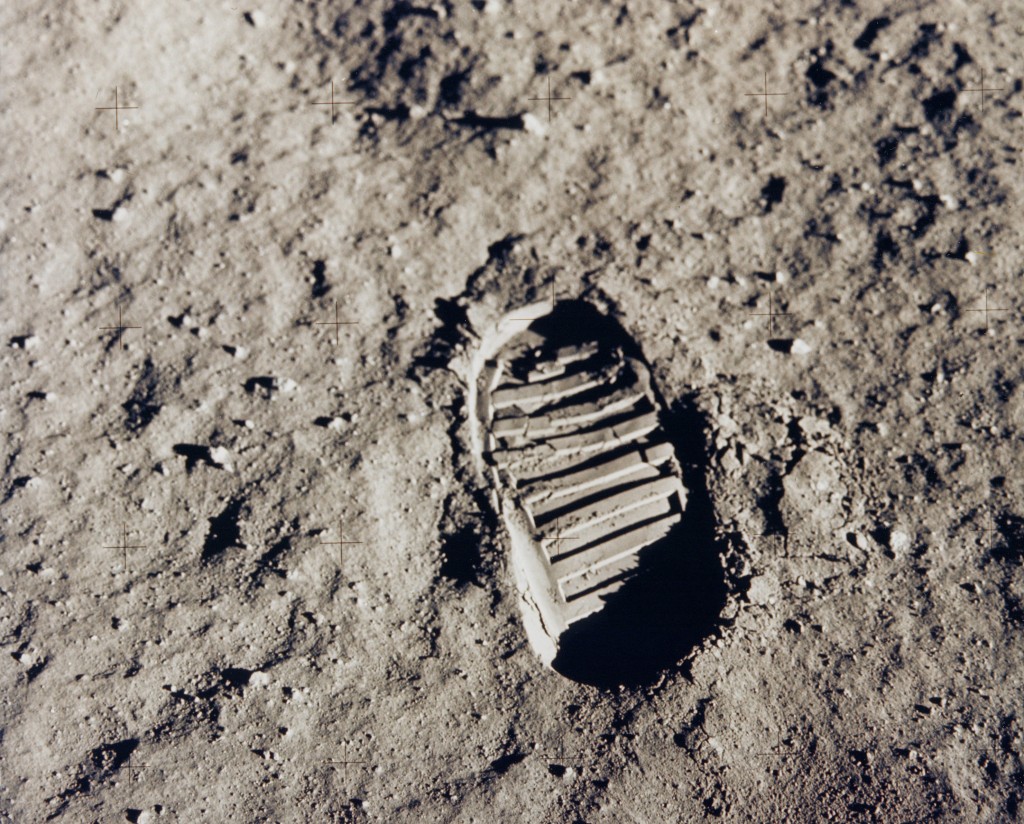
Buzz Aldrin, the pilot of the first lunar landing mission, leaves his bootprint during the Apollo 11 mission on July 20, 1969. (Photo:NASA/Newscom)




























